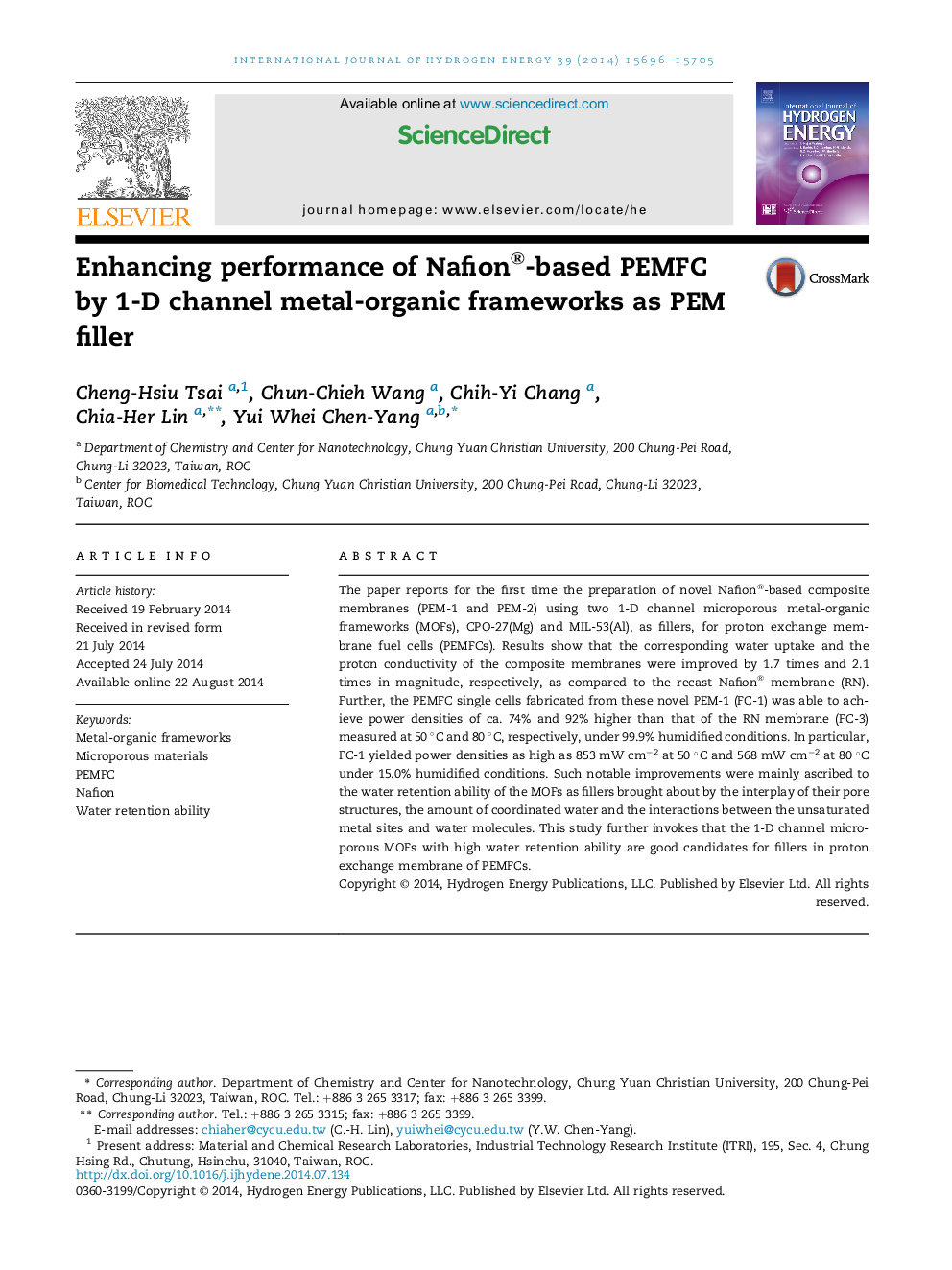| Article ID | Journal | Published Year | Pages | File Type |
|---|---|---|---|---|
| 1272408 | International Journal of Hydrogen Energy | 2014 | 10 Pages |
•The metal-organic framework as filler for PEMFC's composite membrane is first time to report.•The water uptake of the composite membranes was improved by 1.7 times.•The proton conductivity of the composite membranes was improved by 2.1 times.•The power density of FC-1 was improved for 92% under the 99.9% humidified condition.•FC-1 yielded power densities as high as 853 mW cm−2 at 50 °C under 15.0% RH conditions.
The paper reports for the first time the preparation of novel Nafion®-based composite membranes (PEM-1 and PEM-2) using two 1-D channel microporous metal-organic frameworks (MOFs), CPO-27(Mg) and MIL-53(Al), as fillers, for proton exchange membrane fuel cells (PEMFCs). Results show that the corresponding water uptake and the proton conductivity of the composite membranes were improved by 1.7 times and 2.1 times in magnitude, respectively, as compared to the recast Nafion® membrane (RN). Further, the PEMFC single cells fabricated from these novel PEM-1 (FC-1) was able to achieve power densities of ca. 74% and 92% higher than that of the RN membrane (FC-3) measured at 50 °C and 80 °C, respectively, under 99.9% humidified conditions. In particular, FC-1 yielded power densities as high as 853 mW cm−2 at 50 °C and 568 mW cm−2 at 80 °C under 15.0% humidified conditions. Such notable improvements were mainly ascribed to the water retention ability of the MOFs as fillers brought about by the interplay of their pore structures, the amount of coordinated water and the interactions between the unsaturated metal sites and water molecules. This study further invokes that the 1-D channel microporous MOFs with high water retention ability are good candidates for fillers in proton exchange membrane of PEMFCs.
